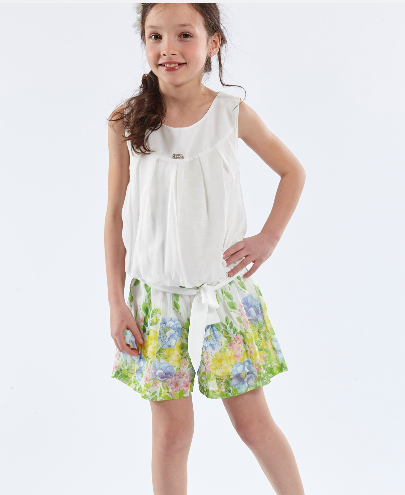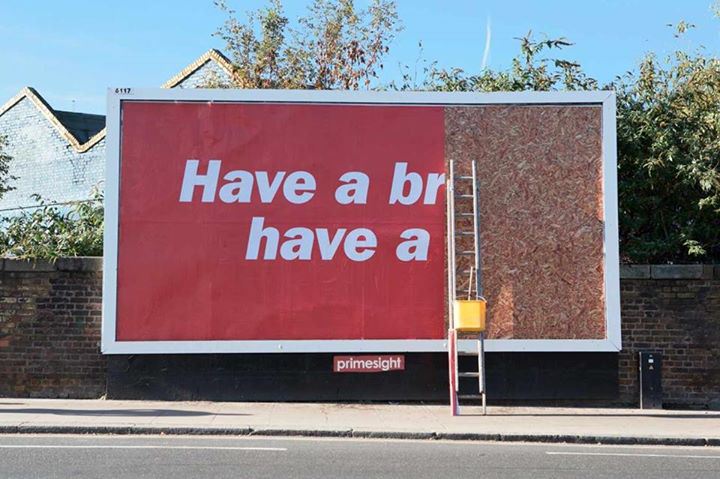Contents
If the price touches the pattern target, either exit the position or hold on to it in case the prevailing trend is expected to continue. At all costs, keep trailing the stop loss and protect the winning position. The first strategy suggests taking a long position when the price breaks the top side of the wedge. Before taking a trade, one should make sure that it is not a false breakout. This pattern is usually followed by a reversal in the downtrend to the upside. Hence, this forms an opportunity to take long positions in the market.
Rarely, the rectangle pattern could act as a reversal pattern, especially if it appears near the end of an ongoing trend. What ever the form it takes, do not try to anticipate the direction of the breakout. Just keep in mind that rectangles are more likely to continue the prevailing trend rather than reverse it.

The support line is drawn in an upward direction, while the resistance line is drawn in a downward direction. Even though the breakout can occur in any direction, it frequently follows the market’s overall trend. A rounding top is a bearish reversal pattern that appears at the end of an uptrend. This pattern marks an end to the prevailing uptrend as it represents a gradual shift from demand to supply.
Bulkowski on Pattern Pairs: Falling Wedges
This tool is generally used to spot a reduction in the momentum of a bear market and signals a potential shift in the opposite direction. However, it is not enough to just wait for a breakdown to start trading — one must also confirm the reversal with other indicators such as RSI, stochastic and oscillator. If a falling wedge appears during a downward shift of momentum in the market, it is considered a reversal pattern.
Usually, but not always, in case of an expanding broadening top pattern, price may fail to reach the upper line on the third rally. This may be construed as a warning that the rally is running out of steam. If the subsequent decline drags the price to decisively break the lower line, it can be construed as a trend reversal. Similarly, in case of an expanding broadening bottom pattern, price may fail to reach the lower line on the third decline. If the subsequent rally lifts the price to decisively break the upper line, it can be construed as a trend reversal. However, being a bullish continuation pattern, when price is trading within the triangle, expect modest upticks in volume during rallies and downticks in volume during declines.

This is because it has a bullish implication regardless of the place at which it occurs—in the middle of a rally or at the bottom of a market. Similarly, a rising wedge is called a bearish wedge because of its implications regardless of the place at which it is formed. As is evident from the falling and rising wedge charts, these patterns usually occur in the middle of a trend and, therefore, are treated as continuation patterns. Since the orientation of these patterns—falling wedge is bullish and rising wedge is bearish—are well known, it is easy to trade based on these patterns as well. Read our complete guide to stock chart patterns for more information. When a rising wedge occurs in an overall downtrend, it shows that the price is moving higher, and these price movements are losing momentum.
To determine this, two trendlines are drawn over the pattern, and if it forms a triangle, it implies the stock might break out. A Head & Shoulder top is a bearish reversal pattern that appears after a rally in price. The above chart shows a falling wedge acting as a continuation pattern. Notice the strong pickup in volume once price broke above the upper trendline.
This is because price could drop just because of a lack of buyers. However, for price to move higher, there must be buying interest in the security. Also notice in the chart how, following the neckline breakout, price found support right near the vicinity of the neckline before heading back higher again.
Falling Wedge
As time progresses, both these trendlines move in the same direction, but at a different pace. There is the inverse cup and handle pattern, which is a bearish continuation pattern. The inverse cup and handle are used to spot bearish trades in the market. Once finished, the market will break out into a bullish ascending trend.

Post pattern implications are sharp or faster fall or faster rise is expected. An inverse Head & Shoulder is a bullish reversal pattern that appears after a decline in price. The first trough is called the left shoulder, the second trough is called the head, and the third trough is called the right shoulder. In the above chart, notice the gradual shift from supply to demand. Notice how the first part saw a gradual decline, the second part saw an equilibrium between sellers and buyers, and the third part saw a gradual rally along with rising volume.
Contracting triangle (Pattern type: Bullish/bearish Continuation)
However, the pattern can signify that the rally is losing steam and the price is about to head lower. A rising wedge pattern is created when the price of an asset moves up in a narrowing range. This pattern is considered bearish, as it typically signals that the asset is about to enter a downtrend. It is preferable to start a trade after the price of the security breaches the top trend line.
The recovery from the low of the head fails to break the previous peak before heading south again. The pattern is complete and a reversal is indicated once price breaks below the neckline connecting the low of the left shoulder and the low of the head. The neckline could be upward sloping, horizontal, or downward sloping. Based on experience, an upward sloping or horizontal neckline is preferred over a downward sloping neckline. A falling wedge chart pattern is known as a continuation and reversal pattern. The easiest way to spot a falling or descending wedge pattern is by looking for two converging trend lines that have been forming over time.
The second part shows an equilibrium between sellers and buyers, and provides the first hint that selling pressure is starting to ebb as price moves in a horizontal range. The third part belongs to the buyers as demand starts to gradually pick up and exceed supply. The reversal is signalled once price breaks above the high that was registered during the start of the pattern.
An expanding broadening pattern has two trendlines that are diverging. Sometimes, when price is trading with the triangle, volume picks up modestly during rallies and fades during declines. This usually, but not necessarily, indicates that the break could be on the upside, especially if the trend before entering the pattern was up. Similarly, in some cases, when price is trading within the triangle, volume picks up modestly during declines and fades during rallies.
- Symmetrical triangles are bullish and bearish continuation patterns where two trend lines begin to intersect in symmetrical triangles, indicating a breakout in either direction.
- These are easy to read, quick to comprehend, and relatively simpler to integrate with your chart pattern trading strategies.
- A falling wedge reversal pattern is one of the technical analysis charting patterns that happens when there is a sharp decline followed by a period of consolidation.
- If the price touches the pattern target, either exit the position or hold on to it in case the prevailing trend is expected to continue.
- Notice in the below chart how supply is coming in at higher and higher levels, while demand is coming in at a fixed level.
This rare formation is also called a megaphone or a broadening top formation. Unlike the normal triangles, where the area keeps reducing over a period, in this case it keeps widening, that is, it looks like an inverted triangle. The volume usually falls when a normal triangle formation occurs, indicating the investor indecision. GST Calculator On the other hand, the volume usually spurts when a widening triangle is created. This is because it is formed when there is a lot of unsettled trading activity in the market. This means that neither the bulls nor bears are in a dominating position and, therefore, they are trying harder to bring things under control.
Rounding bottom (Pattern type: Bullish Reversal)
While a contracting triangle pattern has two trendlines that are converging, an expanding broadening pattern has two trendlines that are diverging. https://1investing.in/ This pattern is characterized by lows getting lower and highs getting higher. When the lows are connected, we have a downward sloping trendline.
This is because the shrinking of the range means that the bearishness with regards to an asset is losing steam. A wedge chart pattern is among the most widely occurring chart patterns. This pattern is a falling wedge because it looks like an inverted V on a chart. If you look closely, you can see the hammer candle that clearly broke below the lower Bollinger band. The hammer candlestick formation is essentially a bullish pin bar that often occurs at or near the termination point of a downtrend.
Generally, in case of a falling wedge pattern, the breakout is in an upward direction. It has been calculated that the upward breakout has been 68% of the times. In this technical chart, it is clearly visible how a falling wedge pattern is being formed by the price movement of the currency pair. That being said, there are a few situations where the Wedge Pattern can also be used as a sign of potential trend continuation.
When the price breaks upward out of the pennant resistance, it’s usually a bullish sign. However, when the price spills under the pennant’s support, a bearish move could be in the works. Additionally, we will often see the slope of lower line of the descending broadening wedge to be steeper than that of the upper line within the pattern. A rising wedge sees two ascending lines converge in an uptrend, while a falling wedge occurs when two descending lines converge in a downtrend. The rising wedge pattern is a formation that looks like the opposite of a falling wedge.
Is this Pattern Bullish or Bearish?
This indicates that the price may continue to fall lower if it breaks what does a falling wedge indicate below the wedge pattern. While this article will focus on the falling wedge as a reversal pattern, it can also fit into the continuation category. As a continuation pattern, the falling wedge will still slope down, but the slope will be against the prevailing uptrend. An inverse H&S is a bullish reversal pattern that appears after a decline in price. The pattern consists of three troughs, just the opposite of its bearish counterpart. Once this bottom is made, price usually recovers part of the decline before finding resistance.
We will utilize the standard Bollinger band settings of 20, 2 as the parameters. Volatility grows throughout the pattern, as bulls and bears battle to take control. On the other hand, the target profit is calculated by extending the height of the wedge from the entry point of the trade on the chart. One can apply two strategies in order to initiate a trade after this pattern has been witnessed on a technical chart. The success rate of any strategy in stock and currency markets cannot be 100%. There is always a possibility of prices moving in the unfavourable direction.



